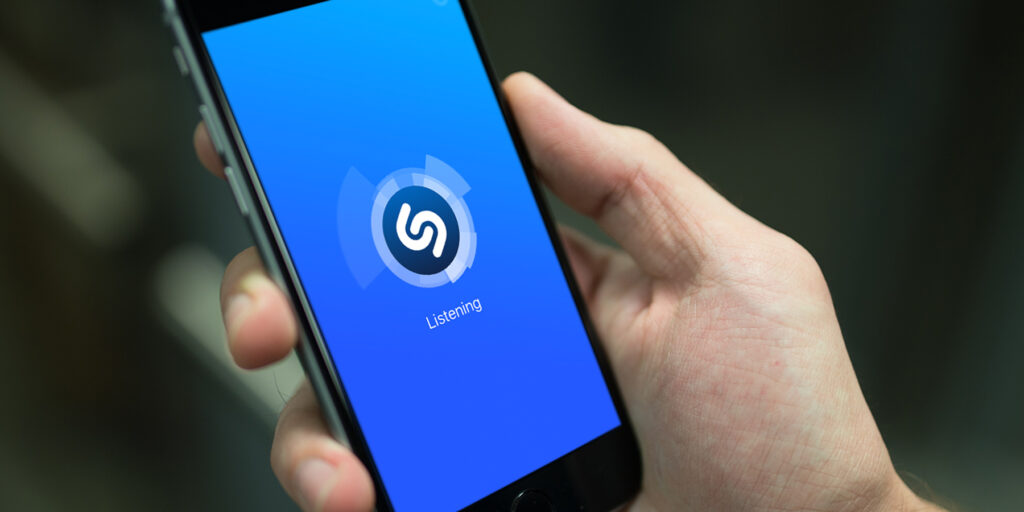Technology accelerates at an ever-increasing rate. As an entrepreneur, how do you make sense of new technologies and understand their potential to help you and your venture?
In this post, we’ll take a look at one particular technology: machine learning (“ML”).
The Principle: What do we mean by “machine learning?”
Machine learning refers to the ability to extract and leverage insights from data using computing in an automatic way. Here’s an oversimplified example:
Let’s say you are coaching a basketball team and you need to decide which player should take the most shots. You could simply watch your players take a lot of shots and decide on gut instinct. Or you could capture data (how many shots each player takes and their shooting percentage, i.e. their make/miss ratio) and decide which player you want shooting the ball the most.
In machine learning, a software program trains a model of the world on a large data set and then uses the trained model to make predictions about future data. In our example, this would involve feeding players’ shotmaking ability data to a software model and using insights generated from the calculations to decide which player should take the most shots.
This type of calculation is relatively straightforward because basketball is a simple game—machine learning would be overkill. But the world of business is more complicated, and decision making becomes harder with more complicated data sets.
Perhaps you are familiar with the term data science, which is a related concept. The key difference is that data science often has a human in the loop to interpret results and make them actionable.
How are AI and machine learning related? Whereas Artificial Intelligence refers to software that demonstrates behavior resembling what we would call “smart” or “intelligent,” machine learning refers to this software’s ability to learn on its own.
The Process: How is machine learning deployed currently?
Large companies, such as Google, Facebook, and Amazon, use machine learning to optimize key performance metrics. Often, they will consider a product or business process that could be optimized to increase revenues or reduce costs, or they consider proxy metrics such as number of active users. When considering such a scenario, a team will estimate the value of improving the key metrics (e.g., If we can improve the prediction about which ad to place for each user, it will increase the click through rates by X%).
Once they have selected scenarios with the largest potential benefit to the company according to the key metric estimates, they will begin searching for a better machine learning model. This process involves:
- Finding or improving data sets to train their machine learning models
- Testing existing and new models to improve upon a baseline
- Selecting models that have the best characteristics for the application scenario (e.g., best accuracy or if used in a mobile device, lowest latency or power consumption)
After selecting a model, the company will move the model into production by integrating it within existing software infrastructure or tools.
This whole process often has significant computing requirements to set up and process data sets, train multiple different models, and to test and verify quality of models. Current machine learning applications often require more computing power than high-end consumer PCs and can sometimes use supercomputers to run. It is worth noting that machine learning is deployed in many scenarios including low-power devices where compute performance is limited, but sufficient compute power of our mobile devices has only recently become available (roughly 2012 and later).
The Products: What are the current applications of machine learning?
Not all industries that use machine learning are what comes to mind when we think of technology companies. For example, the oil and gas industry has used machine learning for decades. In this domain, ML applications include assessing the locations and sizes of underground oil reserves and estimating the most profitable ways to distribute oil and gas products.
Some industries have a rich, but short history of machine learning. In online search, ML is used to select the best responses to search queries and advertisements that are shown to users.
Emerging domains include those where ML models can be deployed into user products. Mobile apps such as optical character recognition, speech recognition, translation, and speech generation are all implemented as machine learning models.

One particularly interesting example is the Shazam mobile app. This app allows a user to record a short segment of a song and the app identifies the song and artist. Users find a need for the app when they are out in a public place with music, but they don’t have another way to find out the artist or name of the song. In addition to using machine learning to identify songs, Shazam has collected a database of how users interact with their app: People only record songs that they like, and they only record portions of the songs that contain the musical characteristics they like. With this information, Shazam can predict the characteristics of song sections that make the song popular.
The Promise: What are the next opportunities in machine learning?
At a high level, machine learning has the capability to improve any product or process that can yield significant data points for training models to predict or generate results.
Consider the following industries:
Automotive: There is huge investment entering the automotive space, where various companies use machine learning not only to improve autonomy of driving vehicles, but also to optimize computer-controlled components such as the fuel system, automatic diagnostics to predict problems, and route planning, etc.
Video: It is becoming easier to process images for detecting objects and to process audio to recognize speech and language. Video currently accounts for more than 75% of internet traffic and there are many emerging opportunities to use image, object, and speech recognition to handle video in various ways. Applications of this machine learning tech might give a list of the objects in a video, annotate the appearances of characters or actors with links to their profiles, or provide automatic captioning or translation of spoken words.
Medical/Health: There are numerous potential applications in the medical space. For example, by processing medical records, it may be possible to help doctors predict whether patients might have adverse reactions to medications or how long they might have to stay in the hospital after an operation. Other examples include image processing to identify things like bone breaks or fractures, other kinds of lesions, tumors or cancers.
In addition to the above, the legal, gaming (especially virtual and augmented reality), education, and smart home/IoT industries are at early stages of showing promise for ML applications.

A Data-driven Future
As the amount of data in the world increases, the reach of ML will expand.
As entrepreneurs, the implication is that understanding how ML can leverage data can increase the success of your ventures.
But on an even bigger scale, AI and ML have implications for the global community as professionals, consumers, and citizens. Understanding these technologies and how they will impact day-to-day life will give you a better foundation to navigate and make sense of the complexities of an ever-changing world.
Written by Joel Hestness and Cam Houser